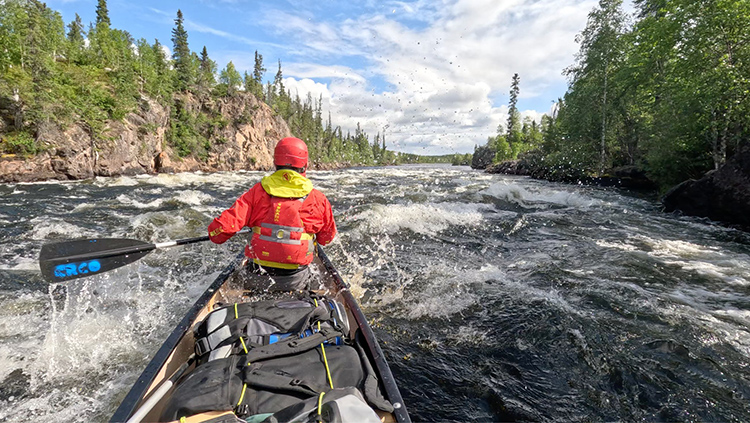
The Porcupine – Remote, Rugged and Spectacular
This is a big trip. Even getting to the Porcupine River requires some effort. The Porcupine is Saskatchewan’s most northerly river.
Starting on the border between northern Saskatchewan and the Northwest Territories, this is a true northern wilderness river, in “the land of the little sticks”.
“Saskatchewan means “the river that flows swiftly”. It is an apt name for this province, especially the northern region, which was travelled by canoe for thousands of years, long before the fur trade. Vast lakes, streams rushing through rocky banks, forests of black spruce with feather moss carpets, tamarack bogs and granite cliffs made overland travel difficult in many places. The canoe was the most efficient means to move north, south, east or west.” – Laurel Archer, Northern Saskatchewan Canoe Trips.
The Porcupine is remote and spectacular. Paddling aficionados consider it possibly the best river trip in Saskatchewan. Yet very few paddle the route in any given year and it is highly unlikely you’ll see anyone else on the river.
There are numerous rapids and a number of falls. Many of the rapids can be run. Some sections have to be portaged. Others are down to the judgement of the group. We expect to use a range of downstream journeying techniques from lift-overs to lining. And this decision-making is part of the attraction for us.
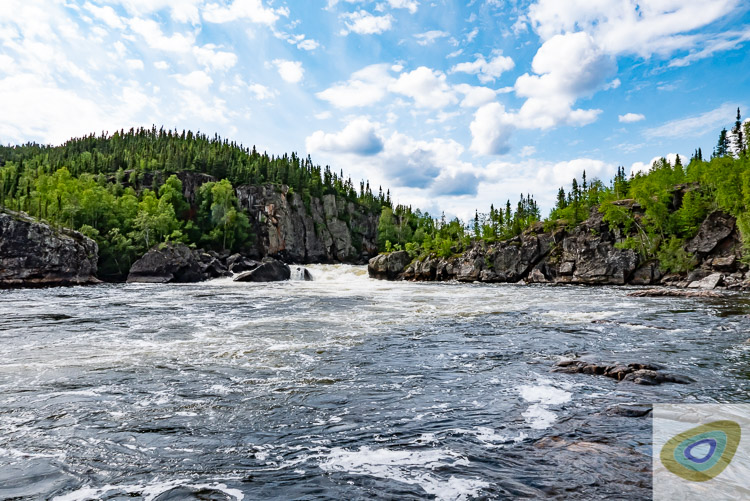
Real Adventure, Real Decisions
This is a real adventure, where decision making is brought to the fore. This should also be part of the attraction for you. You’ll be traveling with experienced paddlers yet you will be fully engaged with the process of travelling this landscape, not just led through it. The intention is to involve you in the decision making (mentored practice) and to develop your skill in judgements on how to negotiate the river features and terrain.
This trip on the Porcupine River involves float plane flights both into and out of the wilderness. The trip proper starts with a flight from Points North Landing to the Porcupine River headwaters at Selwyn Lake, just inside the Northwest Territories. Logistically this is the most complex trip we currently offer.
From Selwyn Lake the route is a spectacular, truly remote two-week wilderness journey through pristine wilderness inhabited by bald eagles, moose, black bears, wolves and caribou.
The aim is to negotiate the entirety of the Porcupine River, arriving at the confluence of the Porcupine and the Fond du Lac River. The landscape here is sandy, with some excellent camping and magical forests back from the river. After spending a comfortable night here, we will be extracted by float plane back to Points North.
This is a demanding trip through rugged terrain. You should be sufficiently strong and fit for canoeing and carrying gear on rough portages over a two week period. The rugged terrain has its scenic advantages, though, from the falls on the river, to high cliffs and deep canyons and, in particular, the intriguing “eye cave”, (see the image below).
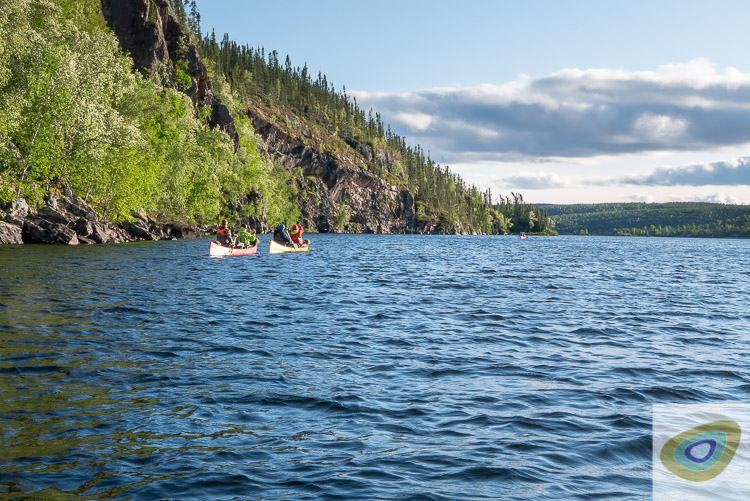
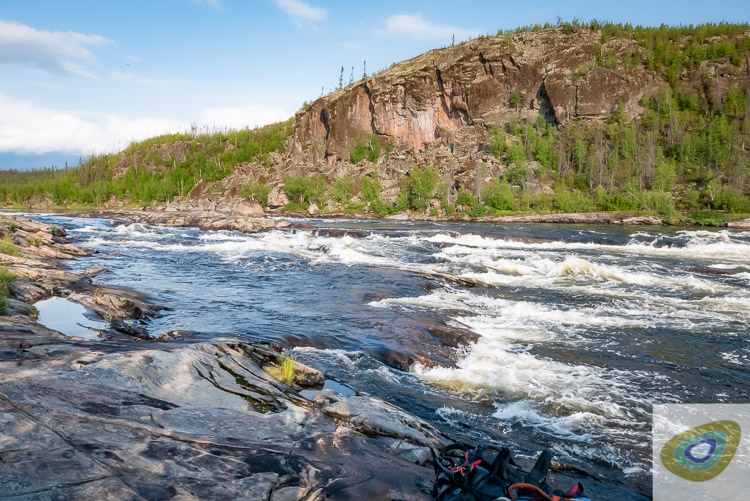
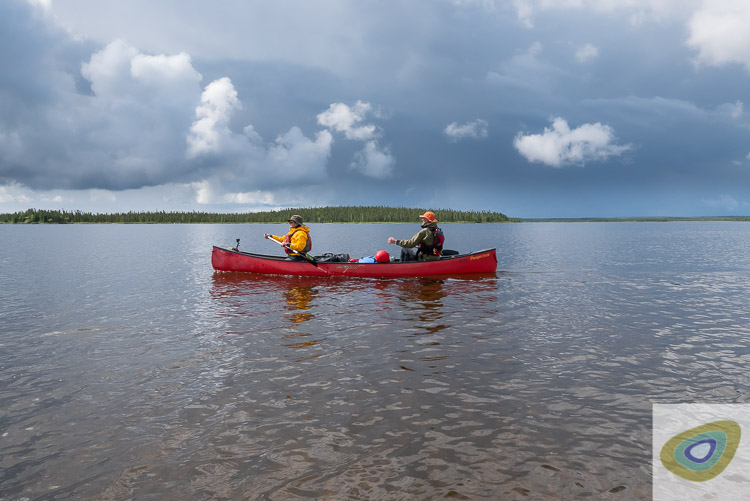

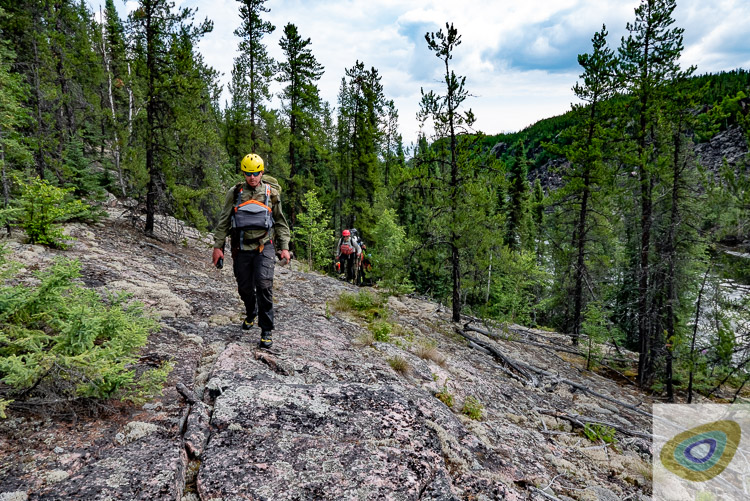
Porcupine Expedition – Your Guides
During your time on this trip you will have the opportunity employ and develop your canoeing skills under the guidance of top canoe coach and guide, Ray Goodwin, MBE.
You will also have the opportunity to hone your wilderness skills with renowned bushcraft instructor, Paul Kirtley.
Ray and Paul work closely together on numerous skills training courses and guided canoe journeys, bringing a unique blend of skills and experience to the mix, all of which you will benefit from as you travel with them on the Porcupine River.
Porcupine River Expedition – Pre-requisites and Considerations
Suitability and Previous Experience
This trip is not suitable for novice canoeists, nor is it suitable for those who only have flat water paddling experience. Rather, the trip is more suited to those who are at least progressing to an intermediate level of paddling ability. This is not about certificates from British Canoeing or other awarding bodies. Rather, relevant experience is what’s important, regardless of certificates.
If you have undertaken our River Spey trip or have already joined us on one of our other Canadian canoe adventures such as on the Missinaibi River or the Bloodvein River, then you have the experience necessary to join this Porcupine trip.
If you have other experience and are interested in joining us on this trip, please pick up the phone or drop us an email. Paul or Ray will be more than happy to chat with you. All our contact details are here.
In terms of camping, you should be comfortable with living outdoors and sleeping in a tent for the best part of a fortnight, packing your gear each day and moving on to a new location for each night’s camp. In camp you will be expected to help with firewood collection, fire management, food prep, cooking, water purification and other daily campcraft. Our wilderness trips are a group effort, which involve everyone, guides and participants alike, immersing you in living and traveling in the environment.

Travel, Food And Accommodation
All food, transfers and accommodation during the trip is included in the trip price. This includes hotel accommodation and transfers from Saskatoon to the start point of the actual canoe trip at Selwyn Lake and pick up and transfer from the end point of the trip back to Saskatoon.
We will convene in Saskatoon, Saskatchewan in the evening of the first day of the advertised trip schedule (dates stated here). Saskatoon has an international airport and is well served by a number of airlines. International and internal flights prior to our meeting in Saskatoon and after our finish in Saskatoon are not included in the trip price.
Personal Kit And Canoeing Equipment
The trip price includes full outfitting, meaning all group camp equipment, cooking equipment, barrel packs, portage packs, canoes, paddles and any other canoeing or camping equipment you need.
This being said, as well as our outdoor clothing, we encourage participants to bring their own buoyancy aid/PFD, helmet, tent and other sleeping kit, as you are already used to them.

Porcupine River Trip Itinerary Overview
- Day 1 – Meet in Saskatoon, Saskatchewan, Canada.
- Day 2 – Travel from Saskatoon to Points North. Sort gear.
- Day 3 – Flights into Selwyn Lake. Start canoe trip.
- Days 4 to 14 – Canoe and portage down the Porcupine River. Wild camping par excellence all the way.
- Day 15 – Return to Saskatoon. Overnight Saskatoon.
- Day 16 – Head home/onward journeys.
What’s Included
- Overnight accommodation in Saskatoon at the beginning of the trip.
- Travel from Saskatoon to Points North.
- Charter flight from Points North to Selwyn Lake.
- Expedition canoes, paddles, barrels/portage packs.
- Group camp equipment such as cooking pots, group tarp.
- Charter flight pick up, returning to Points North.
- Travel from Points North to Saskatoon.
- Overnight accommodation in Saskatoon at end of trip.
- All meals from when we meet to when we part ways.

What You Are Responsible For Organising
- Your travel to Saskatoon, the meeting point for the trip. (Also your travel home from Saskatoon after the trip).
- Personal clothing and camping equipment (tent, sleeping bag, sleeping mat) and PFD/buoyancy aid – a full kit list will be provided.
- Personal travel insurance.
Click here for Porcupine River Expedition dates and pricing…
